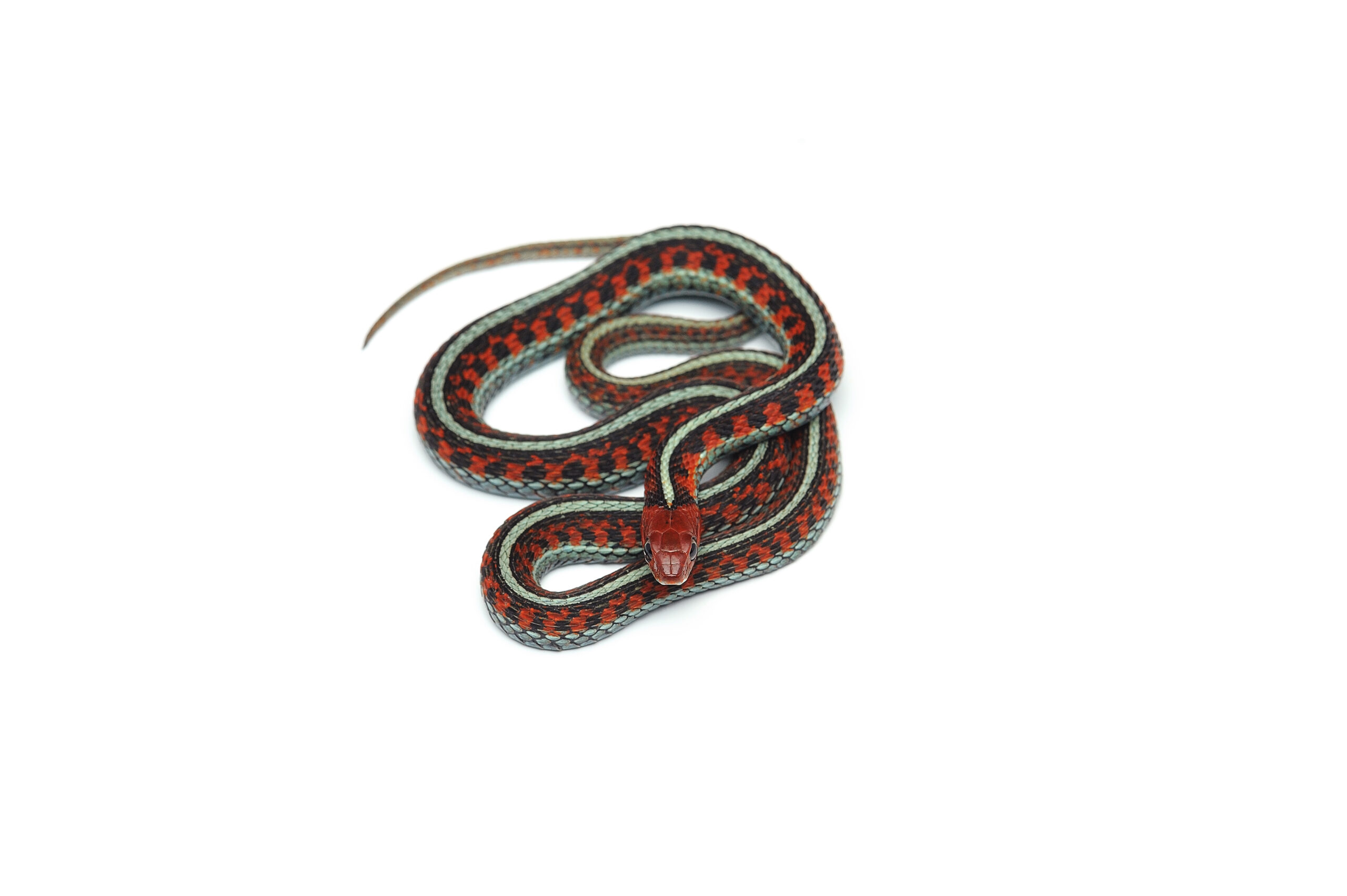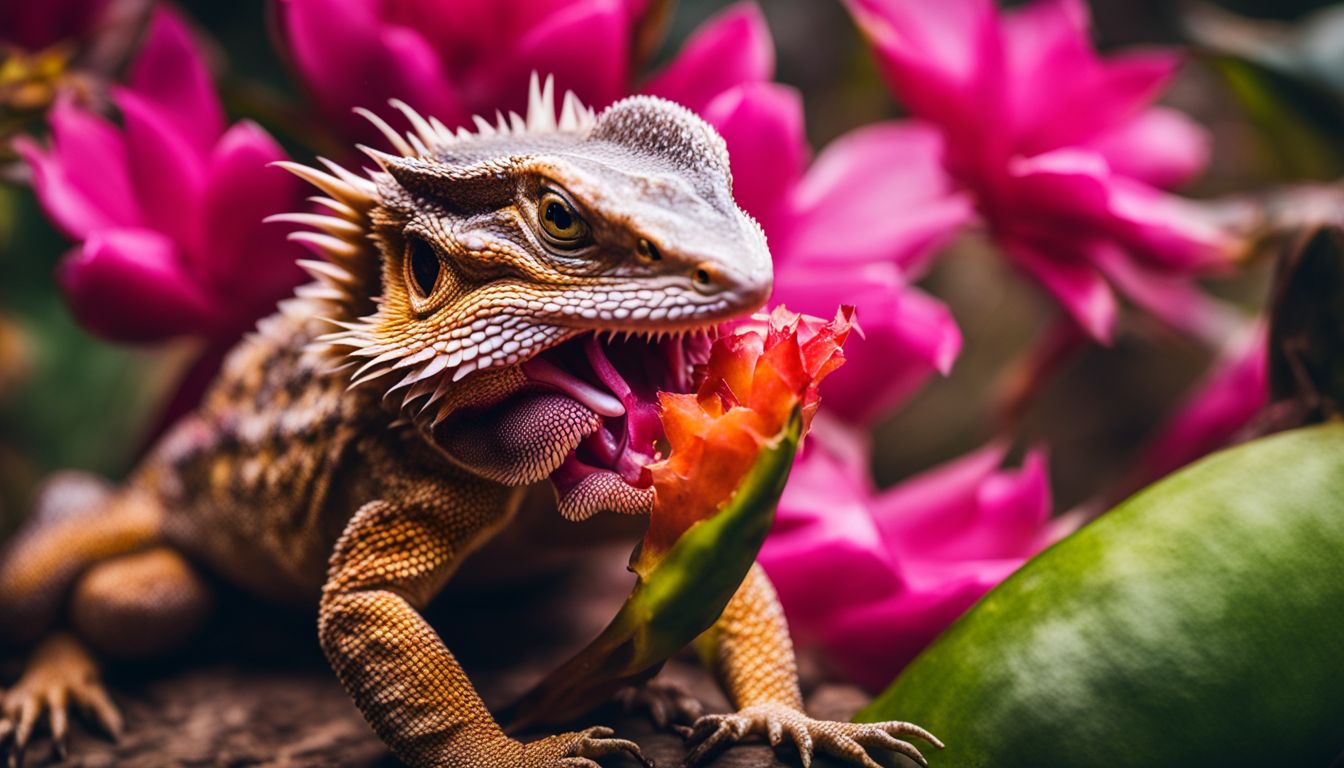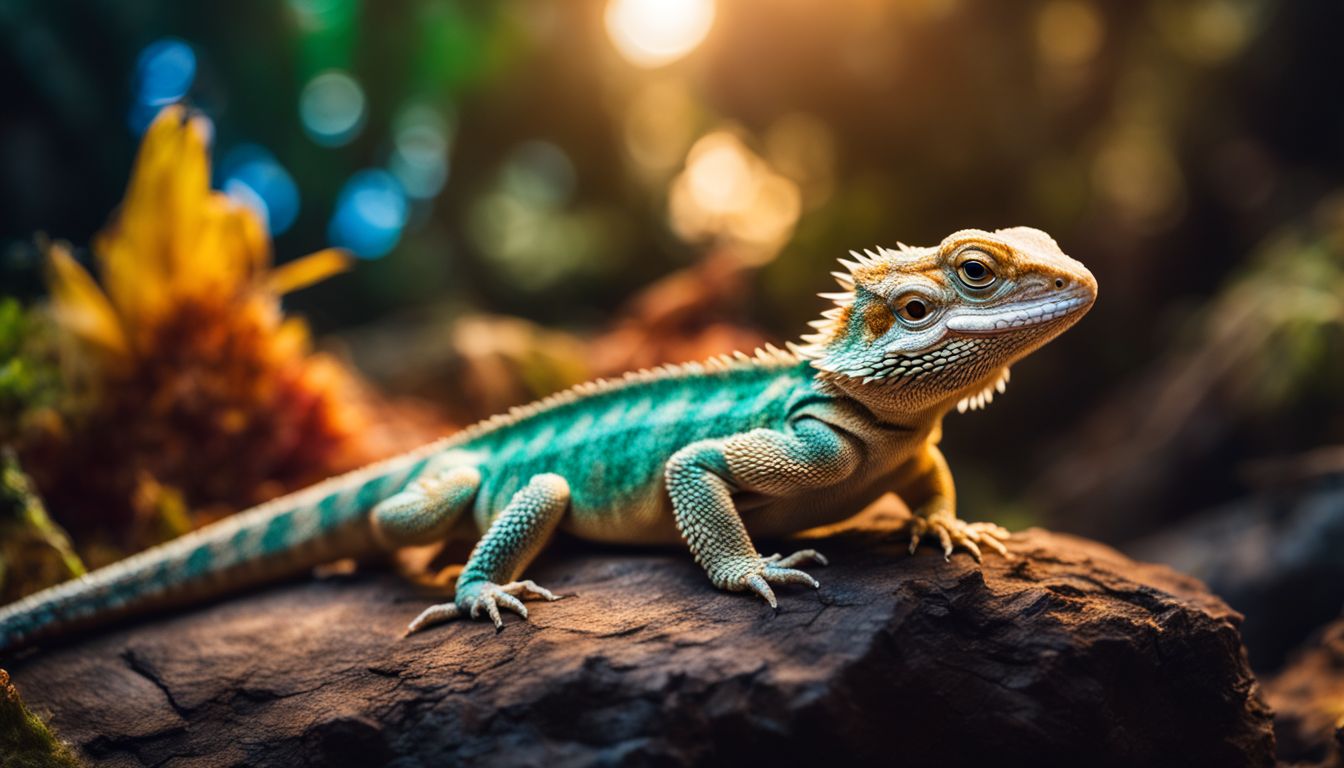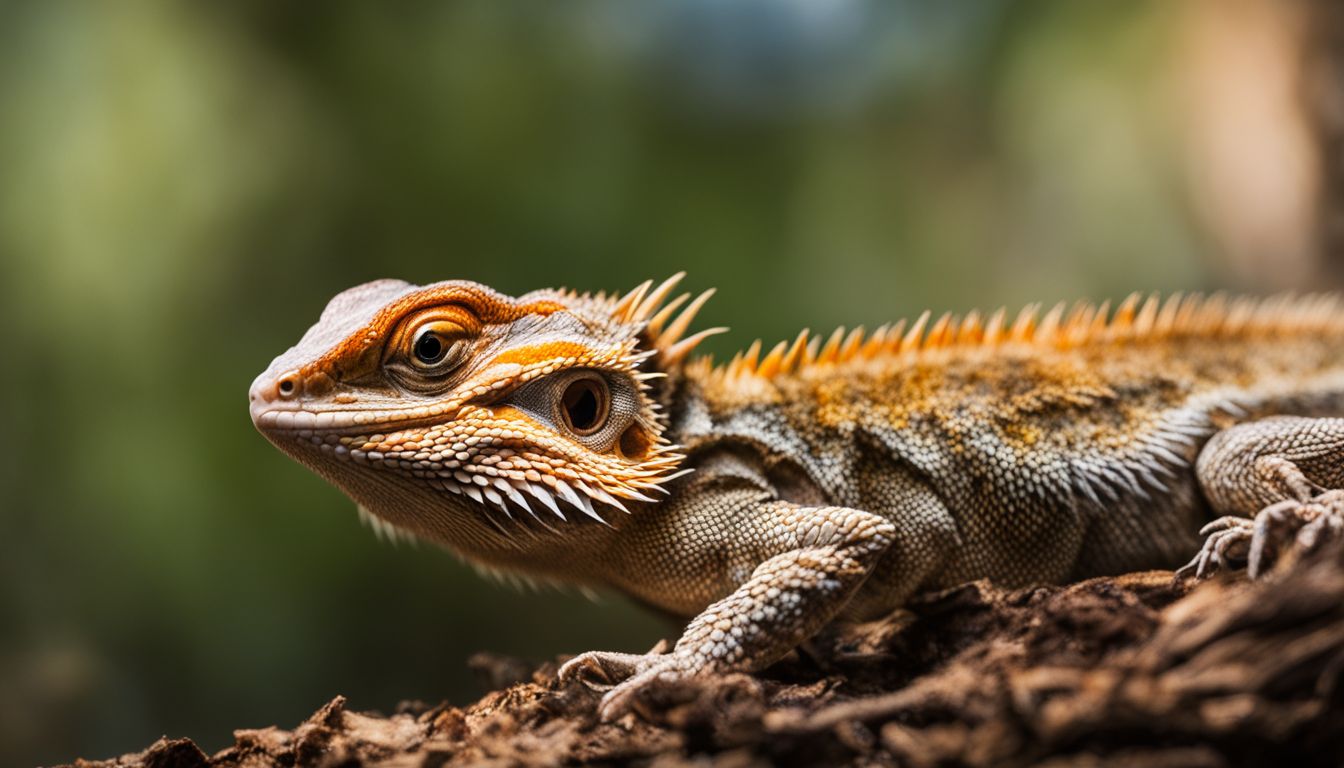Have you ever wondered what fuels the slithering motion of garter snakes as they stealthily navigate through gardens and wooded areas? Gaining insight into the dietary habits of these fascinating reptiles not only provides an understanding of their ecological role, but also helps to dispel common misconceptions.
In this blog, we will delve deep into the carnivorous nature of garter snakes, exploring their diverse menu comprising rodents, birds, fish, insects and more.
Key Takeaways
- Garter snakes are carnivorous and have a diverse diet that includes small mammals, birds and their eggs, fish, insects, invertebrates, and even unusual prey such as leeches and carrion.
- The diet of garter snakes is influenced by factors such as geographic location, seasonal changes, age and size of the snake, and environmental pressures.
- Understanding what garter snakes eat is crucial for their survival in the wild and for keeping them healthy in captivity. Providing variety in their diets with live or pre-killed prey at appropriate portion sizes can help sustain these important predators’ ecological role.
Garter Snake Basics
Garter snakes can be found in a variety of habitats, from woodlands to grassy plains, and are known for their adaptability.
Habitat And Behavior
Garter snakes are remarkably adaptable reptiles, making their homes in a wide variety of habitats throughout North America. From dense forests and grasslands to wetlands and suburban areas, these resilient creatures can thrive in many different environments.
In terms of behavior, garter snakes tend to be diurnal or crepuscular (active during the day or dawn and dusk), making them more easily observable than many other snake species.
They have also been known to travel long distances in search of food or hibernation spots; one notable example is the communal dens where they hibernate together with other garter snakes.
Physical Characteristics
Garter snakes are well-known for their distinctive yet appealing physical characteristics, which set them apart from other snake species. These colorful reptiles typically exhibit a pattern of longitudinal stripes running the length of their body, with the most common colors being a combination of green, yellow, or white on a background of brown or black.
In addition to these striking patterns, garter snakes vary greatly in size depending on factors such as age and species. On average, adult garters measure between 18 and 54 inches long (45-137 cm) – making them one of the smaller snake species found throughout North America.
Their slender bodies allow for swift movements when hunting prey or evading predators.
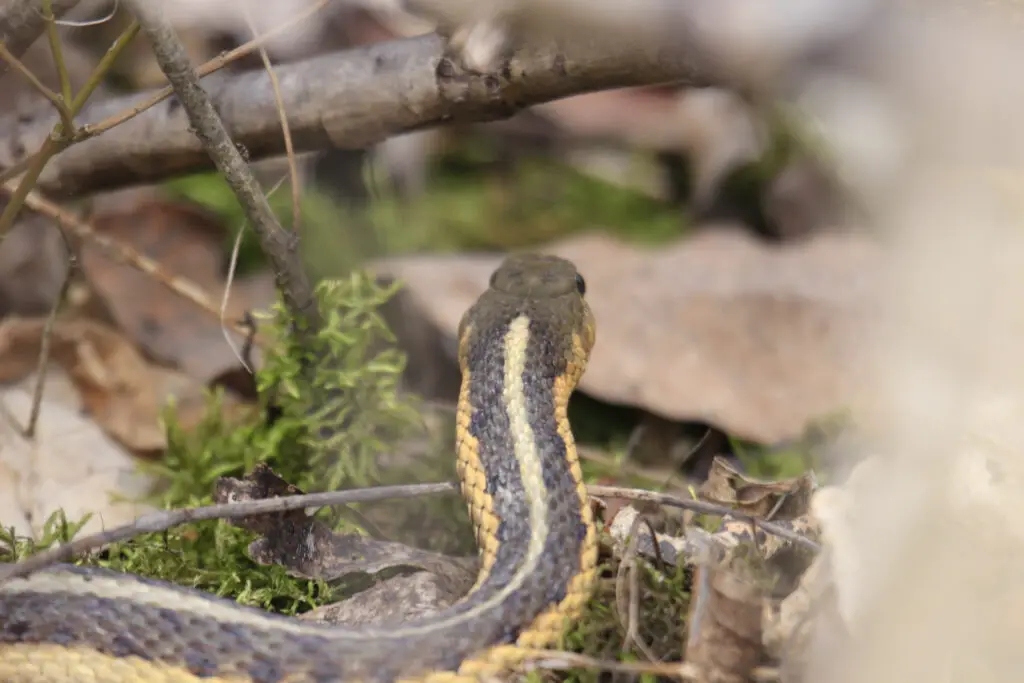
The Carnivorous Nature Of Garter Snakes
Garter snakes possess a natural carnivorous instinct that drives them to consume a variety of prey items in their ecosystems. These slithering predators primarily focus on small vertebrates like frogs, fish, and tadpoles, as well as insects such as crickets and worms.
These adaptable reptiles are opportunistic feeders with an incredible ability to devour prey almost the same size as their own bodies. For example, they can swallow whole mice or lengthy worms without any issue due to their flexible jaw structure.
As part of their carnivorous nature, some species of garter snakes even exhibit cannibalistic tendencies under certain circumstances. While this behavior is not widespread or common among all garter snake populations, it serves as a testament to these creatures’ fierce predatory instincts and adaptability when faced with scarcity or environmental pressures.
Prey Items Consumed By Garter Snakes
Garter snakes have a diverse range of prey items, including small rodents and mammals, birds and their eggs, fish and aquatic prey, insects and invertebrates, and even unusual items such as snails.
Small Rodents And Mammals
Garter snakes are known to have a varied diet that includes small rodents and mammals. The smaller species of garter snakes prey on earthworms, slugs, and insects while larger snakes feed on amphibians, fish, nestling birds as well as small animals such as mice.
One interesting fact about the Plains Garter Snake is that juveniles consume small prey items like annelids and small anurans while adults eat a range of prey including larger organisms and mammals.
Garter snakes commonly rely on constriction when hunting for rodents or other larger prey but will also eat smaller prey immediately without killing it first.
Birds And Their Eggs
Garter snakes are carnivorous reptiles that have a diverse diet, which includes birds and their eggs as part of their prey. Some species of garter snakes have been observed raiding bird nests to feed on the eggs or even capture and consume adult birds.
Interestingly, some garter snake populations may specialize in consuming particular types of birds or their eggs depending on geographic location and environmental factors.
For instance, coastal varieties may prefer sea-bird eggs while those living near freshwater sources may target waterfowl in addition to land-based bird species.
Fish And Aquatic Prey
Garter snakes are excellent swimmers with a particular affinity for aquatic prey. They often consume small fish, tadpoles, and even crayfish found in ponds, streams, and rivers.
In fact, the giant garter snake’s diet is primarily comprised of aquatic prey.
Interestingly enough, some species of garter snakes can spend up to 90% of their time in water habitats. This is particularly true during colder months when they may hibernate under rocks or logs near bodies of water.
Insects And Invertebrates
Garter snakes are known for their varied diet, which includes insects and invertebrates. They prey on creatures such as beetles, grasshoppers, spiders, and caterpillars.
Garter snakes use their keen sense of smell to locate their prey and seize it with their jaws before swallowing it whole. Despite being relatively small themselves, they can eat large quantities of insects over the course of a single day.
Unusual Prey Items
Garter snakes are known for their diverse diet, and in addition to the more common prey items, they also consume some unusual foods. One such example is leeches, which are not commonly consumed by other snake species.
Garter snakes have been observed eating both freshwater and saltwater leeches . Another unusual item on the menu for garter snakes is carrion or dead animals.
While most snakes prefer fresh live prey, garter snakes will scavenge on carcasses if food is scarce.
It’s important to note that while garter snakes do eat a variety of prey items including some uncommon ones, it’s crucial to ensure that captive gartersnakes are provided with a varied diet consisting of natural food sources in order to maintain optimal health.
Factors Influencing Garter Snake Diets
Geographic location, seasonal changes, age and size of the snake, and challenges faced by garter snakes in obtaining food are all factors that influence their diets.
Geographic Location
The geographic location plays a crucial role in determining the diet of garter snakes. Different species of these fascinating reptiles are found across North America, and their food habits can vary significantly based on where they live.
For instance, garter snakes living near water bodies may primarily feed on aquatic prey such as fish and tadpoles, while those living in grasslands may rely more on insects and small rodents for sustenance.
Furthermore, studies have shown that even within specific regions, microgeographic variations in food habits exist due to differences in habitat structure and ecological variables.
An example of this is the variation observed in different populations of Thamnophis sirtalis regarding their resistance to tetrodotoxin – a deadly toxin found in newts that serve as their primary prey.
Seasonal Changes
Seasonal changes greatly influence the diets of garter snakes. During warmer months, when prey is plentiful, garter snakes consume a wide variety of insects, small mammals, and birds.
In contrast, during cooler months or in less hospitable environments where food is scarce or hibernation is necessary to survive winter months (depending on the species), garter snakes may resort to cannibalism or even consume their own shed skin for sustenance.
Additionally, seasonal changes can also affect the size and age of preferred prey items for these reptiles. For example, juvenile garter snakes tend to feed more on smaller prey such as earthworms and insects while larger adult snakes prefer larger prey such as rodents and fish.
Age And Size Of The Snake
As with most animals, age and size play a significant role in the diet of garter snakes. Juvenile garter snakes tend to consume smaller prey items such as insects and invertebrates due to their smaller size.
As they grow, the snake’s diet expands to include larger prey such as rodents, birds, and even fish.
In addition to age, size also influences what garter snakes eat. A larger snake can take down bigger prey items than a smaller one. For example, an adult garter snake may be able to consume a small fish or a baby rodent almost as large as its own body, while a juvenile would struggle with the same meal.
Challenges Faced By Garter Snakes In Obtaining Food
Garter snakes face many challenges in obtaining food. Firstly, finding prey can sometimes be difficult since they rely on their sense of smell to hunt and have poor eyesight.
Secondly, competition for food can limit the availability of prey, particularly during the cooler months when sources of food are scarce.
Moreover, environmental factors such as human activities that encroach into snake habitats or alter ecosystems could impact garter snake’s primary source of foods negatively.
For example, habitat destruction could mean fewer small mammals and insects available for them to feed on; water pollution could diminish aquatic life in rivers where some species hunt fish; climate change may also affect reproduction rates in certain amphibian species (a favorite prey item for some garter snakes).
The Hunting Techniques Of Garter Snakes
Garter snakes use a combination of ambush tactics, active foraging, and constricting prey to capture their food; read on to discover the fascinating world of garter snake hunting techniques.
Ambush Tactics
Garter snakes, like many other snake species, use ambush tactics when hunting for prey. They rely on their natural camouflage to blend into the environment and remain hidden until the perfect opportunity arises.
Once the prey is within striking distance, Garter Snakes will quickly strike and capture their target with impressive speed. Other species of snakes may also use this ambush tactic but may employ different strategies such as exhibitionist displays or setting up along known rodent trails to increase success rates.
Active Foraging
Garter snakes are skilled hunters who use active foraging to capture their prey. Unlike ambush tactics where they lie in wait for their meal to pass by, garter snakes actively search for food from dawn until dusk.
They do this by slithering through grassy areas and along the edges of water bodies, using their keen sense of smell to detect prey hiding in burrows or under rocks.
Interestingly, garter snakes have a high metabolic rate that requires them to feed frequently – up to once every few days depending on the size and age of the snake.
This means that active foraging is not just a hunting technique but also an essential part of survival for these reptiles.
Constricting Prey
Garter snakes are known for their carnivorous nature, but they rarely utilize constricting as a hunting technique. Unlike other snake species that use force to suffocate their prey, garter snakes stun or kill their prey by biting it multiple times before swallowing it whole.
This behavior is not common among garter snakes, as they prefer to hunt through ambush tactics or active foraging techniques. Their agility and quick movements allow them to capture fast-moving prey such as frogs and fish with ease.
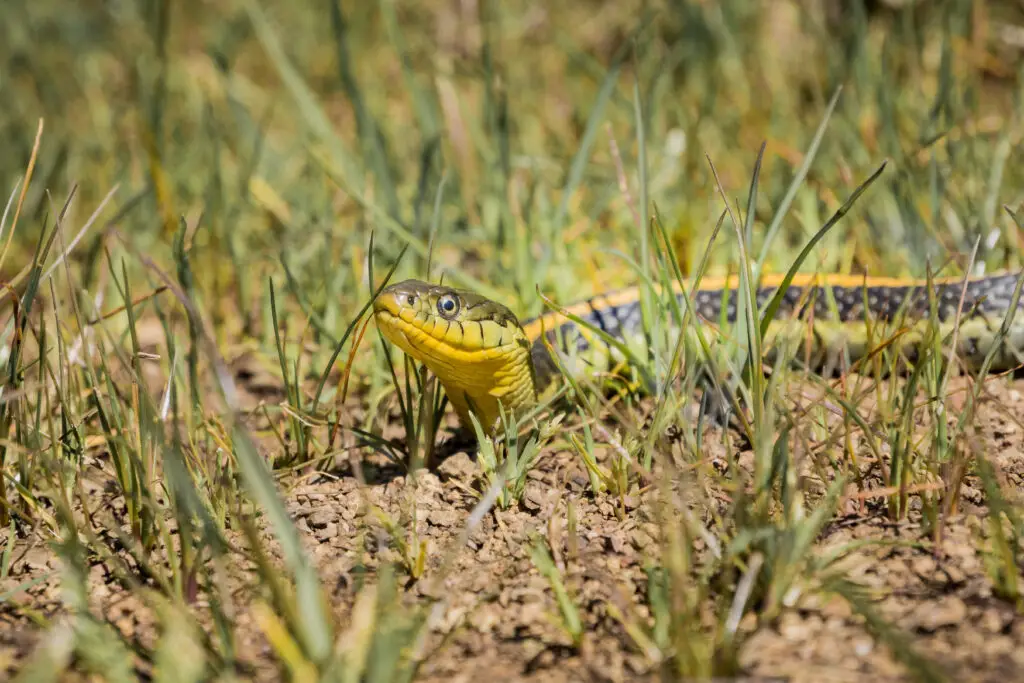
The Role Of Garter Snakes As Predators
Garter snakes play an important role in controlling pest populations and maintaining the balance of local ecosystems, making them essential predators to study.
Controlling Pest Populations
Garter snakes play a crucial role in controlling pest populations, which makes them an important part of the ecosystem. They feed on insects such as grasshoppers, crickets, and slugs – pests that can wreak havoc on gardens and crops.
But it’s not just insects that garter snakes eat; they also prey on rodents like mice and voles.
Effect On Local Ecosystems
Garter snakes are important predators in local ecosystems as they play a crucial role in maintaining the balance of nature. By preying on small rodents, amphibians, and insects, they help control their populations and prevent damage to crops and gardens.
Additionally, garter snakes serve as prey for larger animals such as birds of prey and mammals.
However, human activities such as habitat destruction or pesticide use can negatively impact garter snake populations and disrupt ecosystem dynamics. It’s vital that we understand the significant role these unassuming reptiles play in our local ecosystems so we can take measures to protect their habitats and ensure their survival.
Feeding Garter Snakes In Captivity
Feeding garter snakes in captivity involves providing them with a varied diet of live or pre-killed prey, adjusting the frequency and portion size according to their age and size.
Feeding Frequency And Portion Size
To ensure the health of your pet garter snake, it is important to establish a feeding schedule that aligns with their metabolic needs. Young snakes and gravid females should be fed every 3-4 days while adult snakes can go up to 5-7 days without a meal.
When feeding, it’s essential not to overfeed as this can lead to obesity and health issues down the line. The size of the prey offered should also correspond with the size and age of the snake.
A general rule of thumb for mature snakes is offering prey that is no larger than half their body width, but smaller food items may be necessary for younger or smaller snakes.
Live prey may also need to be stunned before being presented to avoid injuring your pet.
One common mistake among new owners is assuming that garter snakes must be fed only mice or rats; however, these reptiles are quite adaptable if given variety in their diet such as fish, insects or earthworms which offer varying nutritional benefits they require.
These delicious treats contain nutrients like iron, B vitamins (which help turn nutrients into energy), calcium (good for strong bones), and magnesium (good for muscle building) among others – all things very vital components of a balanced diet in garter snakes.
Their diets will vary depending on factors like age, size & geographic location so providing varied options will always guarantee good results when selecting portion sizes, frequency and types of food items offered.
For instance, younger ones may eat more often than older ones but may consume smaller quantities per serving. In addition, giving them distinctive scents from different nutrient-packed live foods could encourage an active appetite during mealtimes.”
Live Vs. Pre-killed Prey
Garter snake owners often face the dilemma of whether to feed live or pre-killed prey to their captive reptiles. This decision has different implications for the snake’s health and well-being, as well as ethical concerns for the welfare of the prey.
| Live Prey | Pre-killed Prey |
|---|---|
| Provides a more natural feeding experience for the snake, stimulating their hunting instincts. | Eliminates the risk of injury to the snake, as live prey can fight back and harm the snake. |
| Feeding live prey such as minnows, frogs, and worms can be beneficial, but should be done with caution. | Pre-killed prey is often more convenient and easier to store, as it can be frozen and thawed as needed. |
| Feeding live fish that are high in thiaminase can lead to vitamin B1 deficiency in garter snakes. | Pre-killed prey allows snake owners to control the nutritional content of the snake’s diet, avoiding deficiencies. |
| Using live prey can cause psychological stress for the snake, as they are forced to hunt in an unnatural and confined environment. | Feeding pre-killed prey reduces stress for the snake, as they do not have to exert energy hunting and subduing their meal. |
| Live prey can carry parasites or diseases that can be transmitted to the snake. | Pre-killed prey from reputable sources is free of parasites and diseases, ensuring the health of the snake. |
Providing Variety In The Diet
Garter snakes in captivity require a varied diet to ensure they get all the necessary nutrients. Here are some ways to provide variety:
- Offer different types of prey, such as rodents, fish, insects, and worms.
- Vary the size of the prey to mimic what they would eat in the wild.
- Rotate the prey items so they don’t get bored with one type of food.
- Supplement their diet with vitamin and mineral supplements to ensure they receive all the necessary nutrients.
- Offer live prey occasionally as this can help mimic their natural hunting behaviors.
It is important to note that garter snakes should not be overfed or fed too much at once as this can lead to health problems. It’s best to consult with a veterinarian or reptile specialist for advice on feeding your garter snake properly.
Interesting Facts About Garter Snake Diets
– Garter snakes have the ability to eat prey almost as large as their body.
Ability To Eat Prey Almost As Large As Their Body
Garter snakes have a unique ability to eat prey almost as large as their body, thanks to their highly flexible jaws and stretchy skin. They can unhinge their lower jaw from the upper one, allowing them to swallow prey that may seem too large for them.
This is especially useful when they encounter larger meals such as rodents or fish in the wild.
Cannibalistic Tendencies In Some Species
While most garter snakes are not known to be cannibalistic, there are some species that have been observed exhibiting this behavior. One example is the wandering garter snake, which has been known to eat smaller members of its own species.
In addition, some female red-sided garter snakes have been seen consuming their own offspring.
It’s important to note that cannibalism among garter snakes is not widespread and varies among different populations and individual snakes within a population. Factors such as age, size, and availability of prey can all influence whether or not a garter snake will resort to eating its own kind.
Diet Variations Based On Age And Location
Garter snakes have a varied diet that varies according to their age and location. Juvenile garter snakes tend to consume soft-bodied invertebrates such as slugs, snails, insects, and earthworms.
As they grow older, they start feeding on larger prey like frogs, fish, and mice. The location also affects the diet of garter snakes because different habitats can support different prey items.
Moreover, seasonal changes can also affect the diets of these fascinating reptiles. During winter hibernation when food is scarce or not available at all; some species store up fat reserves in preparation for this period since they cannot survive long without food.
Conclusion
In conclusion, garter snakes are fascinating reptiles that have a diverse and carnivorous diet. They eat everything from small rodents and birds to aquatic prey such as fish, insects, and invertebrates.
Their diet varies based on their geographic location, age, size, and seasonal changes. Understanding what garter snakes eat is crucial for their survival in the wild and keeping them healthy in captivity.
FAQs:
What do garter snakes typically eat in the wild?
In the wild, garter snakes thrive on a diet consisting of small prey such as earthworms, slugs, frogs and other insects. Larger species may also consume fish or even rodents when food is scarce.
Can you feed a pet garter snake vegetables or fruits?
While some snakes can digest plant matter to varying degrees, it’s not recommended to include vegetable or fruit-based foods in your pet Garter Snake’s diet since they are carnivorous predators and require dietary protein from animal sources including pinky mice and other appropriately sized pre-packaged frozen prey items that match their metabolism.
How often should I feed my pet Garter Snake?
The frequency of feeding depends largely on the age and size of your snake but typically adults need only be fed once per week while juveniles generally require smaller meals twice weekly for growth & development needs.
Are there any specific nutrients that are important for my Garter Snake’s health?
Yes! Ensuring adequate quality nutrient sources & hydration is key to maintaining good health within your Garter Snake. Focus on feeding high-quality proteins like pinky mice (do NOT offer live rodents) supplemented by vitamins specific to your reptile’s dietary needs, ensure clean water access at all times because any impurities can cause serious illness over time while also freshening up environmental conditions such as providing humidity options with mist sprayers/humidifiers if necessary

